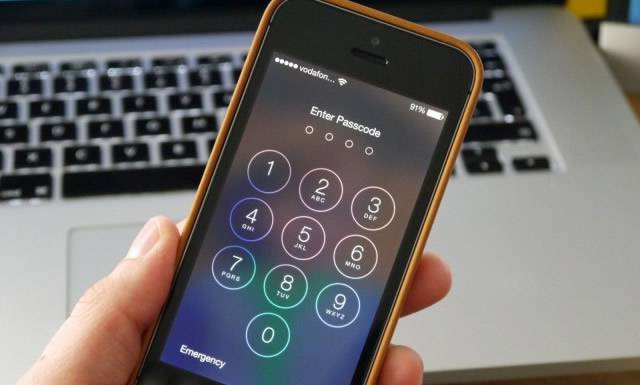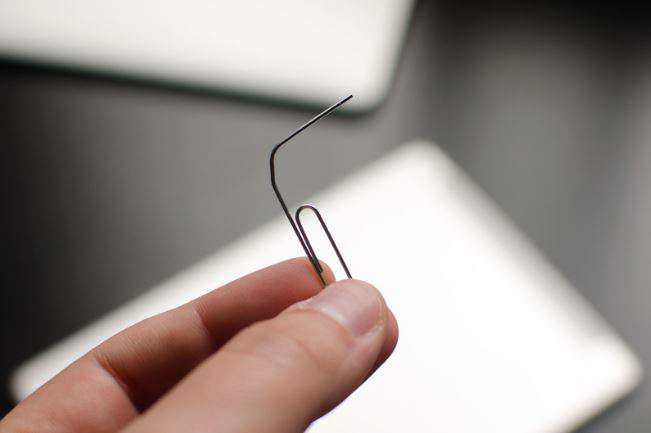With the advancements in technology, one can now connect the iPhone camera to a Mac computer to enjoy a better view of photos taken on the device. Connecting the iPhone camera to the Mac is an excellent way to transfer images from the phone to the computer, making it easy to edit, print, or even share with others. In this blog post, we’ll be discussing various methods to connect your iPhone camera to a Mac.
Have you ever been in a situation whereby you need to have a closer look at your photos on the iPhone, but the screen is just too small? Connecting the iPhone camera to a Mac offers a larger screen size and offers the opportunity to easily transfer files. It’s an excellent way to edit photos with Mac’s advanced setting, back up images and videos, and even manage these files more conveniently.
Video Tutorial:
What’s Needed
For this process to work smoothly, there are several prerequisites that must be in place, these include:
- Your device should be running on an IOS 8 or a newer version.
- The Mac OS should be updated to any version above Mac OS X Yosemite v10.10.5.
- A Lightning to USB cable.
- Photos app for Mac must be installed.
What Requires Your Focus?
Connecting your camera to Mac is quite easy, but you need to focus on a few things. These are:
- Ensure your iPhone has enough power or attach it to a power source to avoid draining the battery while transferring files.
- Connect your iPhone to the Mac using the right cable. A damaged cable may disrupt the connection.
- Ensure your Mac and iPhone are using the same Wi-Fi network if you choose the WiFi import option.
- The Apple ID on your device and Mac should be the same.
Different Methods to Connect iPhone Camera to Mac
Method 1: Connect iPhone Camera to Mac via the USB Cable
Using a USB cable is one of the easiest ways to connect your iPhone camera to Mac. The following are the steps to follow:
- Start by shutting down any software that may be blocking the connection, such as iTunes, Photos, among others.
- Use the USB cable to connect your iPhone to the Mac. A notification will pop up on the iPhone screen asking whether you trust the computer. Tap Trust to complete the connection.
- Launch the Photos App on the MacBook.
- Select iPhone from the menu options on the top left of the screen. All pictures from your iPhone will now be visible on your MacBook.
- Click the Import All New Items or Refresh button if your iPhone photos menu is empty.
- Select the pictures or videos to transfer to your MacBook by holding down the Command key and selecting the preferred photos.
- Finally, click Import X Selected to transfer the selected pictures from the iPhone camera to your MacBook. This may take some time depending on how many files you’re transferring. Once the process is complete, eject your iPhone from the MacBook and disconnect the cable.
Pros:
- It’s an easy and straightforward process.
- Using the USB cable ensures faster transfer speeds compared to other options available.
- The stability of the connection is more guaranteed than relying on a Wi-Fi link.
Cons:
- You need to have a USB cable that’s compatible with the iPhone camera and your MacBook.
- You need to be physically present and close to the MacBook for the transfer to take place.
- You may not transfer large files due to storage space limitations.
Method 2: Connect iPhone Camera to Mac via WiFi
Connecting your iPhone camera to Mac via WiFi is a good option to consider if you don’t have a USB cable. However, you need to ensure that both the MacBook and iPhone share the same Wi-Fi network. Here are the steps to follow:
- First, switch on the Wi-Fi network on both devices (MacBook and iPhone).
- Launch Photos App on your MacBook if it’s not already open.
- Next, go to the Preferences tab in the Photos app and click on the General tab. Select Importing preferences.
- Select iOS Camera from the drop-down menu on the ‘Connecting Camera Opens’ option.
- Select the folder in which you wish to import photos to and apply changes.
- Launch the Photos app on your iPhone and tap on Settings.
- Tap on the Wi-Fi button and connect to the same Wi-Fi network as your MacBook.
- Launch your camera and start to take pictures.
- Select the airdrop option on your iPhone and select the Mac icon that appears. Then, select the photo(s) you wish to transfer.
- Click on Download on the MacBook to save the selected photos to the folder earlier selected.
- Once downloading is complete, eject your iPhone from MacBook and disconnect Wi-Fi.
Pros:
- You can perform the transfer without needing to be in close proximity to your MacBook.
- You don’t need a cable or any other tool to perform the transfer.
- You can transfer several files at a go.
Cons:
- This method may take longer to transfer files especially when sending large files.
- The Wi-Fi network may be unreliable or slow.
- The stability of the connection may be affected by obstructions, poor signals, or other things that can interrupt Wi-Fi connection.
Method 3: Connect iPhone Camera to Mac using iCloud Photo Library
Another way to transfer pictures from your iPhone camera to your MacBook is by using the iCloud Photo Library. For this method to work, you must have an active iCloud account. Here are the steps you need to follow:
- Ensure that both your MacBook and iPhone are connected to the internet and that you have an active iCloud account.
- Open the Photos app on your MacBook and navigate to the Photos’ preferences menu.
- Select iCloud, and make sure that the ‘iCloud Photo Library’ option is activated.
- On your iPhone, find the ‘Settings’ icon and scroll down to locate the ‘Photos’ option.
- Select the ‘iCloud Photo Library’ option, and turn it on if it isn’t already.
- Select the ‘Upload to My Photo Stream’ option as well.
- With the two devices synced, all photo and video content from your iPhone will automatically sync to your MacBook.
- You can access the newly imported media from Photos app on your MacBook.
Pros:
- This method is automated, and all images and videos will transfer automatically once you have turned it on.
- It’s an excellent way to streamline photo library management across devices.
- It’s effortless to set up and use.
Cons:
- It may take a little longer to transfer files, as the syncing process is automatic and may take some time to complete.
- It requires a stable and fast internet connection for the pictures to transfer adequately.
- You need enough iCloud storage to store the pictures.
Why Can’t I Connect iPhone Camera to Mac?
While connecting iPhone Camera to Mac is easy, there may be instances where the connection fails to work. Here are some reasons why it might occur and how to fix them:
- Issue with the Cable: When using the USB method, a damaged or non-compatible USB cable can interfere with the connection. Ensure that you use a cable that’s compatible with both devices, and this will resolve the issue.
- Outdated software: When the software (Mac, IOS, Photos, or iTunes) is outdated, it may fail to detect the iPhone, and the connection won’t work. Ensure you update these apps regularly, and this will help you to avoid this type of problem.
- Low battery: If your phone battery is running low, the transfer may stall. Ensure that your iPhone is well charged before attempting to connect it to Mac.
- Untreated Pop-Ups: Your Mac may fail to detect your iPhone if a pop-up isn’t managed correctly. Ensure you follow the instructions and accept the pop-ups to enjoy the seamless connection.
Implications and Recommendations
Connecting iPhone Camera to Mac comes with several benefits; however, it’s essential to consider the potential implications and recommendations. These include:
- To avoid losing data while transferring them from one device to another, it’s essential to have backups of the files to ensure your data remains safe.
- It’s advisable to have your photos saved on your hard drive, especially if you plan to delete them from your phone.
- Always ensure that you have the right cable when using the USB connection method, since an incompatible wire may cause the connection to fail.
5 FAQs about Connecting iPhone Camera to Mac
Q1: Can I connect my iPhone camera to a non-Mac computer?
A1: Yes. It’s possible to connect your iPhone camera to any computer with a compatible connector and use software like Windows Photos or File Explorer to transfer your files.
Q2: Can I transfer large files through iCloud?
A2: Yes. With an active iCloud account, large files can be transferred without limitations.
Q3: Can I transfer videos using these methods?
A3: Yes. You can transfer videos as you would photos using the options listed above.
Q4: Do I need an internet connection to connect my iPhone camera to my Mac?
A4: Yes. For the iCloud Photo Library method to work, you need an active internet connection while the Wi-Fi and USB methods need a connection to establish.
Q5: What should I do if Photos App is not responding?
A5: You should quit the app and relaunch it again. If that doesn’t work, it may be time to update the app.
In Conclusion
Connecting an iPhone camera to a MacBook is an efficient and convenient way to transfer photos and videos. With the methods listed above, you can transfer files seamlessly with minimal effort. Whether you choose to use iCloud, Wi-Fi, or the USB cable, always ensure that you have the right setup in place to achieve a stable and reliable connection. Keep backups of your files to prevent loss and ensure that you have suitable storage on your devices. Now that you know how to connect your iPhone camera to Mac, you can easily transfer your files and enjoy viewing them on a larger screen.
{“@context”:”https://schema.org”,”@type”:”FAQPage”,”mainEntity”:null}




